
Introduction
Treating asthma with smoke is not a joke. Before the advent of inhalers and corticosteroid drugs asthma really was treated with smoke. Who would have thought that a chief lung irritant like smoke could successfully relieve an asthma attack?
Treating Asthma with Smoke – My Grandmother’s Story
“I need to stop and catch my breath”, words from my grandmother Lily that always peppered our outings. She was an asthmatic. It didn’t matter where we were, out shopping, walking in the street, or trying to catch a tram, we would have to stop so she could catch her breath. If we were lucky there was a seat close by and she would sit for a few minutes to recover. If there wasn’t a seat she would hang on to or lean on whatever was around. Whoever was with her was often that support.
Some days she couldn’t leave the house because of a severe asthma attack. It was those days that she’d reach for the asthma powder. The powder was readily available without prescription from the local chemist.
“Please run down to Miss Edwards and get me some asthma powder,” she’d say to my aunt or mother when they were young girls. Miss Bertha Edwards was the chemist on Somerville Road, Yarraville. Miss Edwards would wrap the asthma powder carefully in brown paper and when safely home my grandmother transferred it to an old jar with a screw top lid.
I was always intrigued with this powder. When an asthma attack came on Lily would put a teaspoonful in an enamel egg cup and put a match to it. She would then breathe in the acrid smoke that rose from the little cup and the bronchial spasm would ease. It always seemed to work.
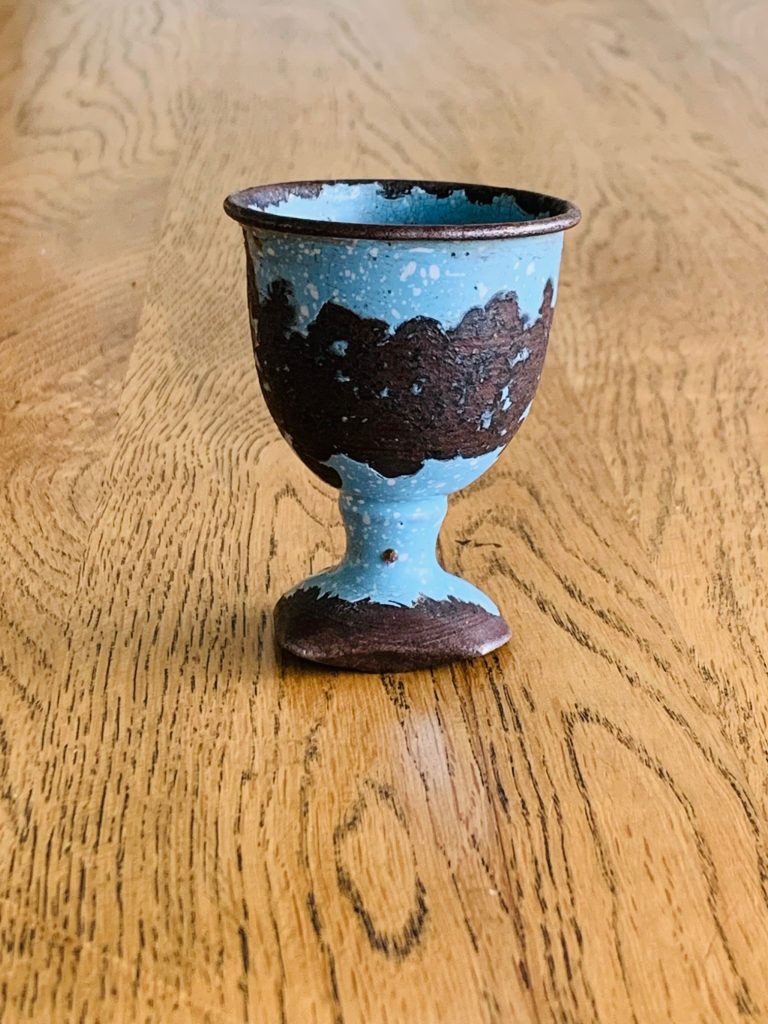
She could never disguise the fact that she’d suffered a bad attack because the smell was distinctive, and lingered in the house well after her little ‘ceremony’ had finished. No evil spirits in my grandmother’s house. It was cleansed regularly with the smoke from the asthma powder.
The powder was such a huge part of her life that one night soon after Lily’s death my mother woke in the night to the smell of asthma powder in the bedroom. Was my grandmother sending smoke signals from beyond? My mother thought so and was very comforted by the experience.
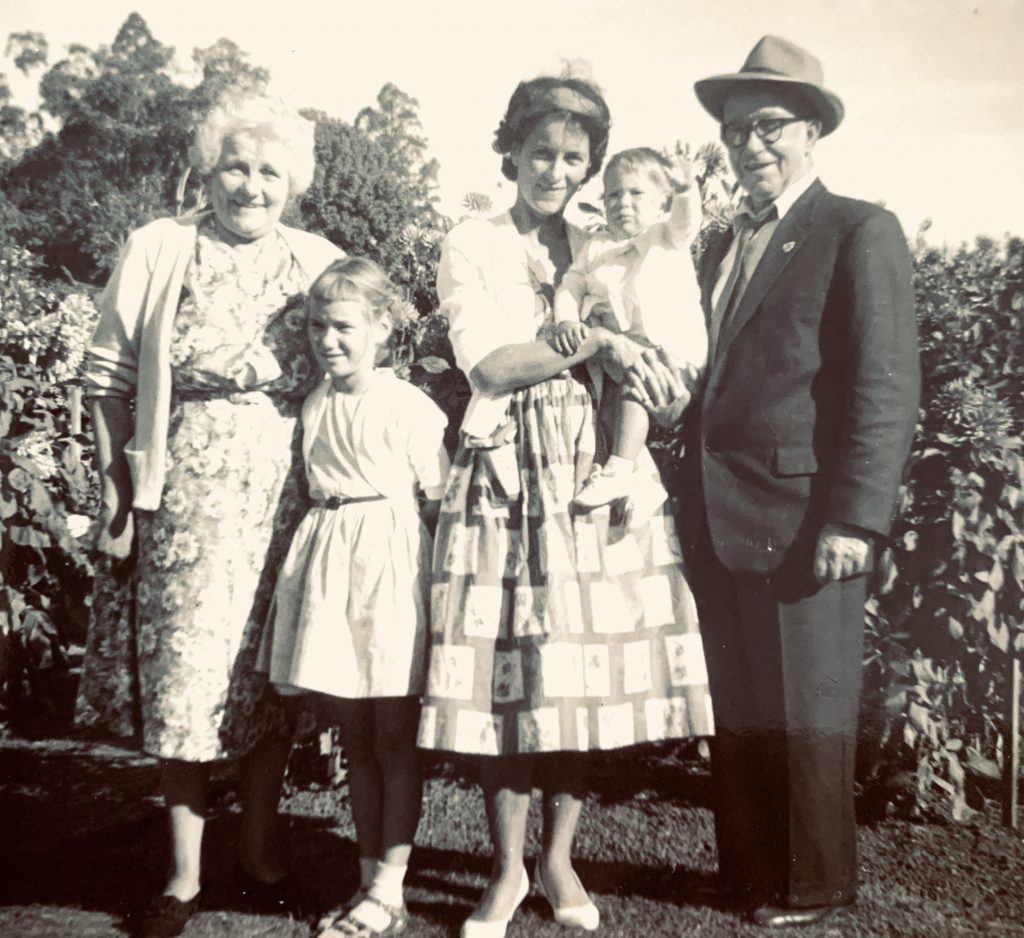
What was in the Asthma Powder?
I was astonished to discover what was actually in asthma powder. The herbal plants used have always been considered poisons. The old herbalists used them with care but always issued warnings on their use. In Australia the plants have been scheduled by the Therapeutic Goods Administration (TGA) and cannot be purchased for internal use except in homeopathic form.
The plants used in the powder included:
- Stramonium (Thorn Apple)
- Belladonna (Deadly Nightshade)
- Hyoscyamus (Henbane)
- Lobelia (Indian Tobacco)
Often Stramonium was the only herb used, however some powders contained combinations of plants, the most popular being Stramonium and Belladonna. Which ever plant or combination was used there was always another additive, potassium nitrate or saltpetre, added for its combustibility. Just like it is in gunpowder!
The four plants have similar actions and properties according to traditional herbalists, all acting on the brain and nervous system. They are anti-spasmodic, anodyne (pain relieving), narcotic (sedative) and poisonous. All, except Lobelia, contain the active constituent atropine which by itself is used in medicine today, particularly for dilating pupils for eye examinations.
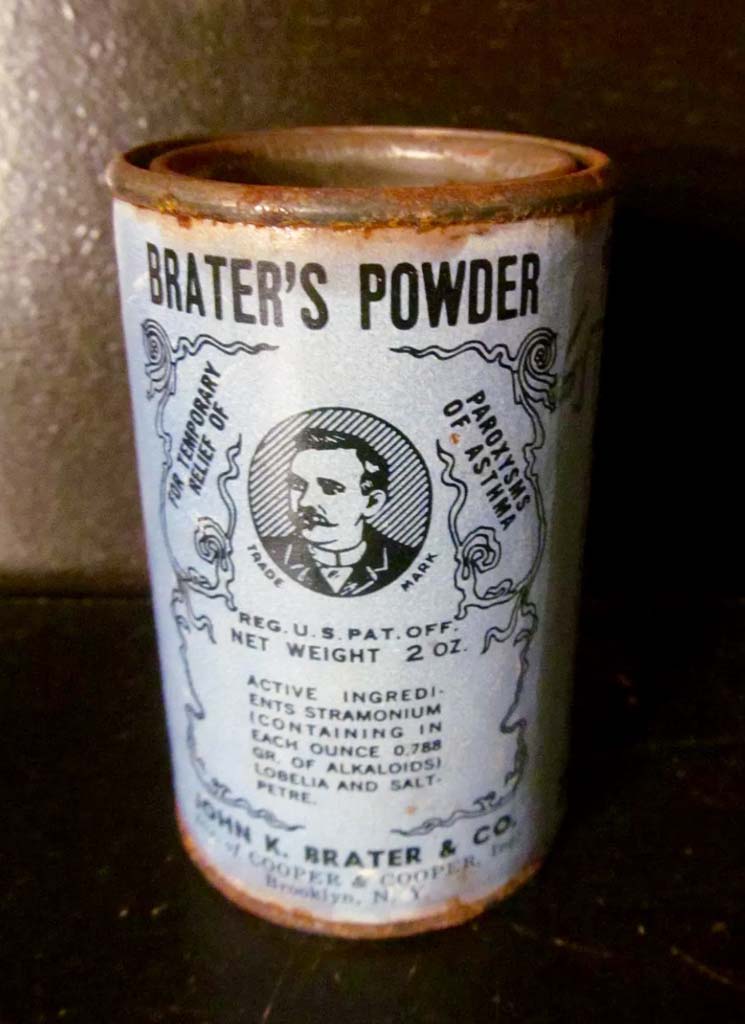
Surprisingly the TGA still allows Stramonium and Lobelia to be used in preparations for “smoking and burning”. This means if a registered pharmaceutical or herbal manufacturing company wanted to, asthma powder could still be made and sold. It also means that the dilution of the active ingredients via the burning and smoking leaves just enough potency to heal rather than harm. The only effect my grandmother felt after breathing in the smoke was relief from her asthma attack. She didn’t experience any other physical or psycho-emotional side effects from the plants which could have been devastating if used in their raw state.
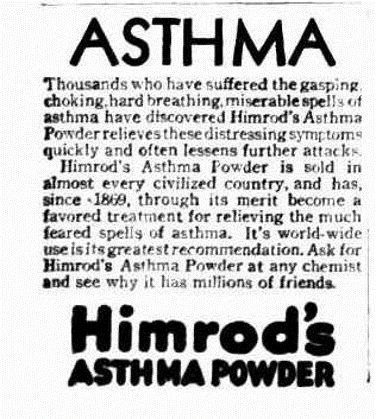
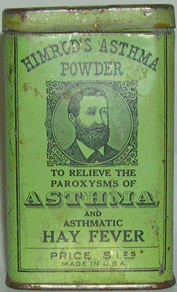
Mullein, a very safe herb, was also an ingredient in one brand of powder. Most people know Mullein, it’s a common herb and grows prolifically along roadsides, in paddocks, in industrial wastelands, even graveyards over the summer months.
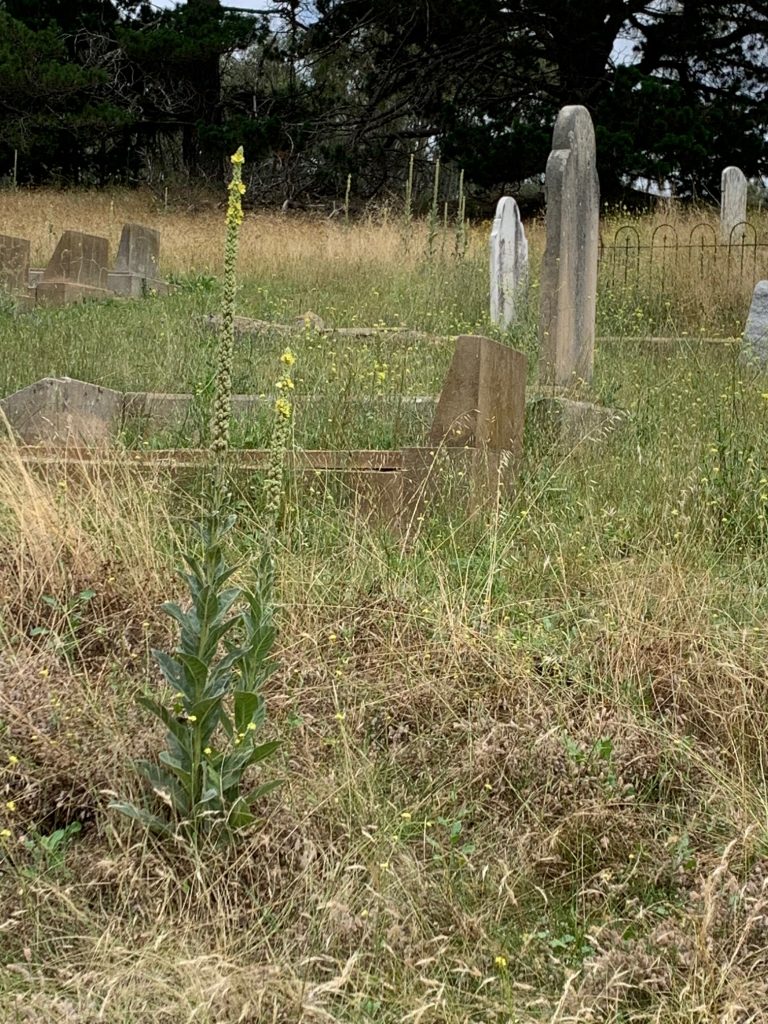
Mullein is a well regarded respiratory herb, particularly for a dry cough, and can be purchased as a tea or herbal tincture at health food shops and from naturopaths.
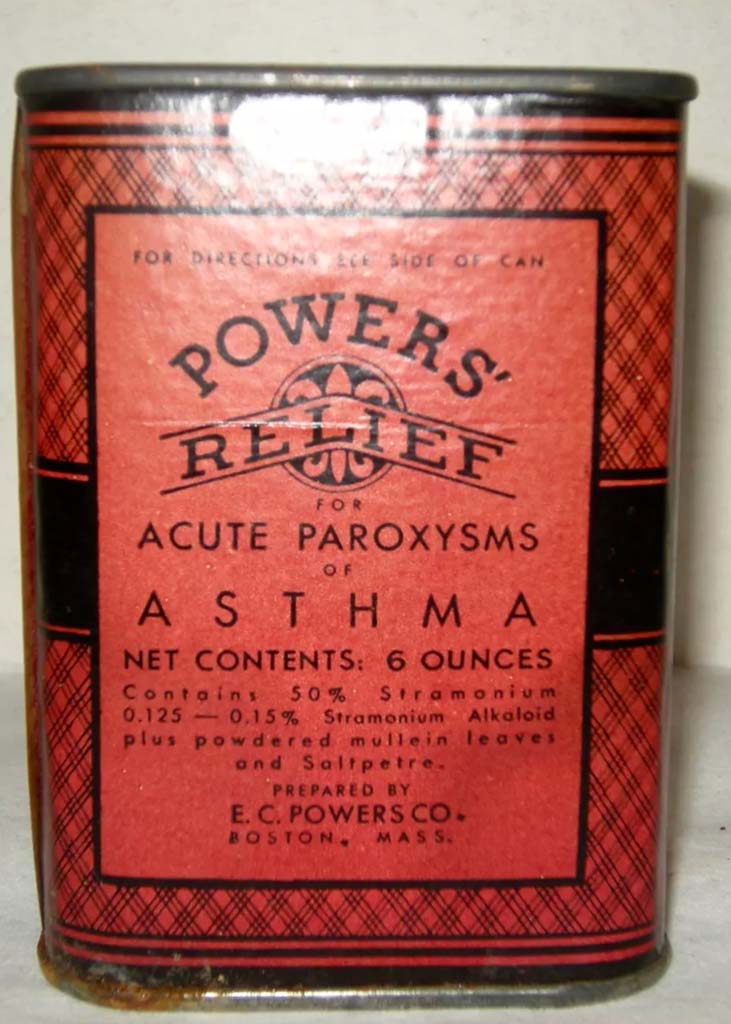
The Smoking Herbs
Stramonium
Culpepper, in his 1794 ‘Complete Herbal’, recommended the juice of the fresh Stramonium plant to treat epilepsy, convulsions and madness. Mrs Grieve however, in her 1931 publication, was more cautious and rather than taking internally, she recommended using dried Stramonium leaves in asthma powders and cigarettes as a chief remedy for spasmodic asthma. She describes how the coarsely ground leaves mixed with an aromatic herb and equal parts of potassium nitrate (saltpetre), are burned in a saucer and the smoke inhaled into the lungs.
She says: “The beneficial effect is considered due to the presence of atropine, which paralyses the endings of the pulmonary branches, thus relieving the bronchial spasm.” (A Modern Herbal, p. 806)
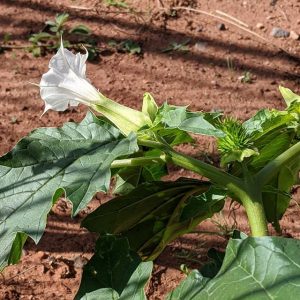
Hyoscyamus
Hyoscyamus, was also traditionally used to treat epilepsy and other nervous and convulsive diseases. Mrs Grieve said Hyoscyamus, “… is poisonous in all its parts and neither drying nor boiling destroys its toxicity”, and the leaves if eaten produce maniacal delirium. Culpeper went further saying, “… whoso useth more than four leaves shall be in danger to sleepe without waking.” The plant was said to have special magical powers and was well known for its psychoactive properties, particularly in the Middle Ages when it was associated with witches’ brews and magic ointments. Vikings were said to use the plant to induce a trance like fury during battles.
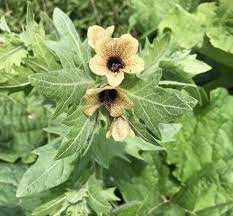
Belladonna
Belladonna, according to Culpeper, causes sleep in some and death in others. And, according to Mrs Grieve, it works in the same fashion as Stramonium but has a less sedative effect on the central nervous system. However the modern view suggests that Deadly Nightshade is probably more dangerous to ingest than Stramonium and Henbane because it contains extremely high concentrations of the alkaloids, Atropine, Hyoscyamine and Scopolamine. These alkaloids are dangerous because they interfere with the proper functioning of the central nervous system and the parasympathetic nervous system and can cause amnesia, hallucinations, dilation of the pupils, blockage of salivary, gastric and intestinal secretions, tachycardia, nausea, vomiting and ultimately coma and/or death. Interestingly while causing narcosis and paralysis in domestic animals, rabbits can eat the leaves with no ill-effects.

Lobelia
Lobelia’s main medicinal use was as an expectorant and anti-asthmatic. Native American Indians smoked Lobelia in ceremonies and also used the plant to treat asthma which was probably responsible for it acquiring the name of Asthma Weed. It is available over the counter in the United States for use in the treatment of asthma, bronchitis and muscular issues. It possesses excellent anti-spasmodic properties but if taken in excess the old herbalists warn that it can have severe side effects including depression, nausea, vomiting, not to mention death.
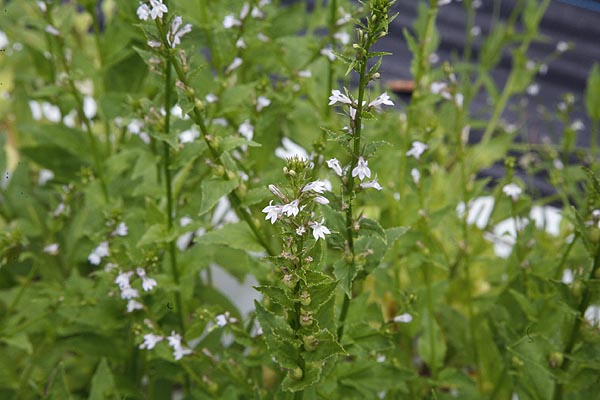
History of Treating Asthma With Smoke
Long before the West adopted smoking as a treatment for asthma, indigenous cultures had been using the method since ancient times using various plants on their own or mixed with tobacco.
The treatment came to the West via the East India Company in 1802 when the Physician-General Dr James Anderson told Major-General William Gent of the Madras Army how effective the treatment was. Gent then informed a medical practitioner in England, Dr Sims, who started treating his patients with this new technique. It was so successful that he began recommending it to other doctors and advertising its virtues in the medical press where he said:
“Some time in the year 1802, I received from General Gent a remedy that he had not long before brought from Madras, which, the General informed me, was used there as a specific for relieving the paroxysm of asthma, and that it was prepared from the roots of the wild purple-flowered thorn-apple (Datura ferox). The roots had been cut into slips as soon as gathered, dried in the shade, and then beat into fibres resembling coarse hemp. The mode of using it was by smoking it in a pipe at the time of the paroxysm, either by itself or mixed with tobacco.”
(Anon., ‘Communications relative to the Datura Stramonium, or thorn-apple: as a cure or relief of asthma’, Edinb. Med. Surg. J., 1812, 8: 364–7, at p. 365. Cited in Jackson M. (2010). “Divine stramonium”: the rise and fall of smoking for asthma. Medical history, 54(2), 171–194. https://doi.org/10.1017/s0025727300000235 https://www.ncbi.nlm.nih.gov/pmc/articles/PMC2844275/#fn31)
After depleting his supply of imported Datura ferox, the English doctor looked to a different Thorn Apple (Datura stramonium) for relief. While the leaves and seeds of this plant were known to be highly toxic and have hallucinogenic effects the doctor found that the stalks and roots provided the same asthma relief as the Indian version, Datura ferox. He was an immediate convert believing that this Stramonium variety destroyed his asthma without any side effects saying:
“I would rather be without life than without Stramonium.”
(Anon., ‘Communications relative to the Datura Stramonium, or thorn-apple: as a cure or relief of asthma’, Edinb. Med. Surg. J., 1812, 8: 364–7, at p. 365. Etc)
In 1901 William Osler, Regius Professor of Medicine at Oxford University, published how crucial smoking and fumigating was as a therapeutic and prophylactic measure in the treatment of asthma. In his The Principles and Practice of Medicine he wrote:
The sedative antispasmodics, such as belladonna, henbane, stramonium, and lobelia, may be given in solution or used in the form of cigarettes. Nearly all the popular remedies either in this form or in pastilles contain some plant of the order solanaceae, with nitrate or chlorate of potash. Excellent cigarettes are now manufactured and asthmatics try various sorts, since one form benefits one patient, and another form another patient. Nitre paper made with a strong solution of nitrate of potash is very serviceable. Filling the room with the fumes of this paper prior to retiring will sometimes ward off a nocturnal attack. I have known several patients to whom tobacco smoke inhaled was quite as potent as the prepared cigarettes. p535-536
Osler’s support for smoking was endorsed by other physicians. As Eric K Chu and Jeffrey M Drazen have suggested, smoking stramonium remained a recommended treatment option for asthma in medical textbooks published throughout the early decades of the twentieth century. In addition, surveys and clinical studies conducted during the 1940s and 1950s continued occasionally to emphasise the therapeutic benefit.
Marcel Proust and Treating Asthma with Smoke
Marcel Proust, the famous French novelist, suffered asthma attacks from boyhood and was prescribed various treatments including opium, caffeine, iodine, morphine and nasal cauterisation. However his favourite treatment as he grew older was inhaling smoke from anti-asthma cigarettes or asthma powder.
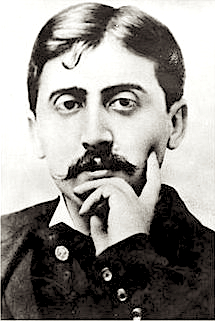
Just like my grandmother Lily, Marcel Proust favoured whatever gave the most immediate and effective relief from an acute attack of asthma, described by Henry Hyde Salter as:
“the sense of impending suffocation, the agonising struggle for the breath of life.”
My aunt remembers her mother saying during an attack:
“Quick pin the curtains back. I need air.”
Today, asthmatics are fortunate to benefit from the great advances in respiratory medicine, particularly the latest prevention and reliever medications. By following their personal Asthma Management Plan devised by their general practitioner or respiratory specialist it is possible to live well with asthma and reduce the frightening prospect of struggling for each breath.
Endnote:
I chose two herbalists to quote in this story the first is ‘Culpeper’ or Mr Nicholas Culpeper a 17th century apothecary who became a thorn in the side of the then medical establishment. He brought medicine to the masses in 1649 by translating the official ‘Pharmacopoeia Londinensis’ into a language the literate public could understand. This angered members of the Royal College who didn’t want their medical secrets revealed. His famous book: ‘Culpeper’s Complete Herbal and English Physisican’ first published in 1794 is one of the most popular books in history and still in print today.
The second herbalist is a 20th century herbalist, Mrs M. Grieve (Maude). Her 912 page book, ‘A Modern Herbal’ was published in 1931 and was the first extensive encyclopedia of herbs to emerge since Culpeper’s day.
What an interesting post, As someone who suffered from asthma as a child I know how frightening it can be not to be able to breath, Anything that could give relief, no matter how weird, would be a boon.
Thank you Alex!
Love this post Sue, so interesting and shows that the old herbalists knew what they were talking about! As modern herbalists we have lost so many different and effective ways of delivering the herbs.
Thanks Jesal!
Wow. That was SO interesting.
I think smoke preparations have undergone a bad wrap since the cigarette industry took over.
Thank you Kerri!
Belladonna is demonized…..until xou’re near to die, then you may be happy to have it.
I did read some funny stuff from official toxicologic studys about people who consumed it without knowing……
Nobody died. (still be careful of course)
I use dattura stramonium as medicine since many years and im still alife, because this plant. I have COPD.
And this year i will have datura metel….for medicinic purr-pose 😹 and because its very pretty